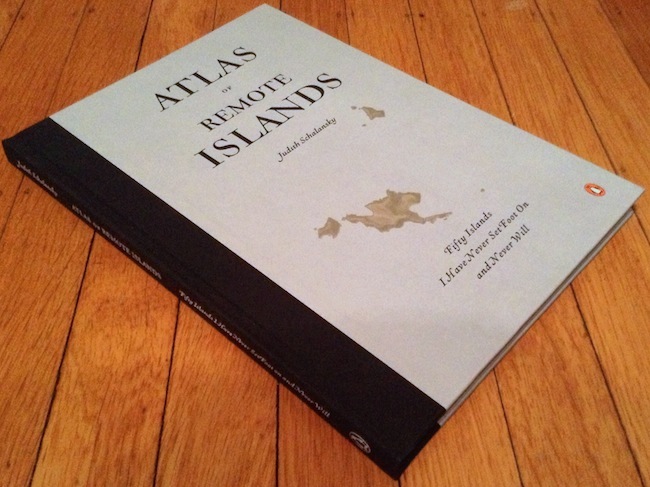
It is high time for cartography to take its place among the arts, and for the atlas to be recognized as literature, for it is more than worthy of its original aim: theatrum orbis terrarum, the theatre of the world. — Judith Schalansky
With this declaration in the preface of the book, the author then proceeds to create such a perfect final argument for her case. If there ever was or is to be map making as art and atlas as literature, this is it.
Atlas of Remote Islands is a stunning achievement. It is a book for lovers of geography, students of history, and dreamers of far-away places. But is is also an intelligent and compellingly written series of essays about each of the fifty remote islands presented. Instead of bland truths and interesting anecdotes one might find in a proper scholarly work, the author takes both factual details and myths and interweaves them into compelling narratives. She whisks you away to a time and a place that is literally in the middle of nowhere. She spins yarns of triumph and heartbreak. She addresses the practical and the fanciful with equal regard in doing so. Unlike any other Atlas you may have encountered, this is a work to be both studied and read.
The preface tells of the author’s life long love of maps and dreams of travel. She was born in East Germany, not long before the fall of the Berlin Wall and the subsequent reunification. Therefore, her perspective of going from dreams of travel that, under Soviet rule, would remain thus to suddenly having the dreams made possibility simply because someone had decided to change the lines on a map is very compelling. Thus her approach to maps is one where lines and borders are imaginary and impractical as any tale one might conjure. She understands that things such as history, maps, and borders are at the will of those that claim them.
This makes all the more sense when she says, “That’s why the question of whether these stores are ‘true’ is misleading. All the text in the book is based on extensive research and every detail stems from factual sources. I have not invented anything. However I was the discoverer of the sources, researching them through ancient and rare books and I have transformed the texts and appropriated them as sailors appropriate the lands they discover.â€
This book is a wonder and a true gem. I highly recommend you appropriate it as a treasure for your collection.
Buy It: Atlas of Remote Islands by Judith Schalansky
